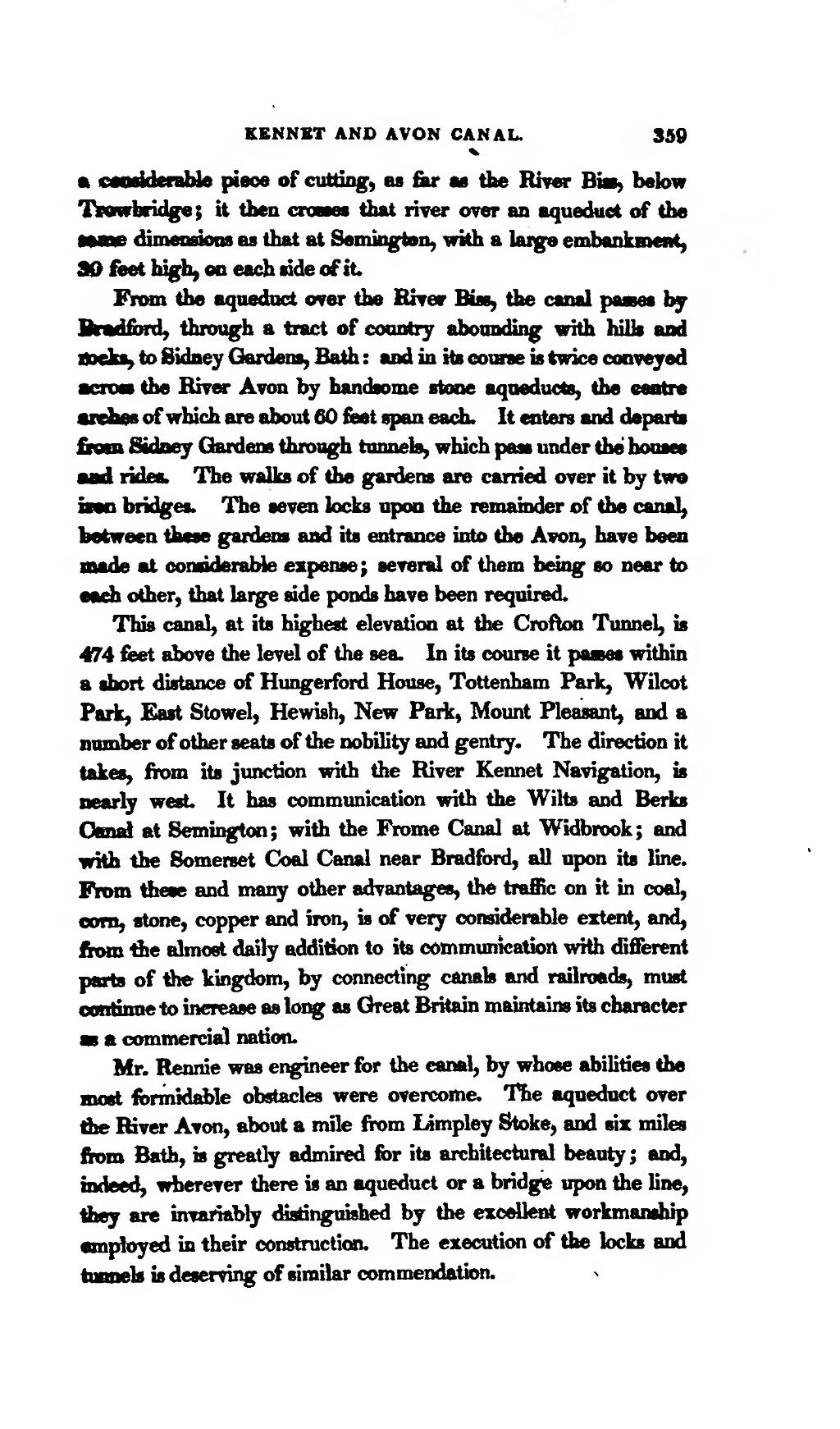a considerable piece of cutting, as far as the River Biss, below Trowbridge; it then crosses that river over an aqueduct of the same dimensions as that at Semington, with a large embankment, 30 feet high, on each side of it.
From the aqueduct over the River Biss, the canal passes by Bradford, through a tract of country abounding with hills and rocks, to Sidney Gardens, Bath: and in its course is twice conveyed across the River Avon by handsome stone aqueducts, the Centre arches of which are about 60 feet span each. It enters and departs from Sidney Gardens through tunnels, which pass under the houses and rides. The walks of the gardens are carried over it by two iron bridges. The seven locks upon the remainder of the canal, between these gardens and its entrance into the Avon, have been made at considerable expense; several of them being so near to each other, that large side ponds have been required.
This canal, at its highest elevation at the Crofton Tunnel, is 474 feet above the level of the sea. In its course it passes within a short distance of Hungerford House, Tottenham Park, Wilcot Park, East Stowel, Hewish, New Park, Mount Pleasant, and a number of other seats of the nobility and gentry. The direction it takes, from its junction with the River Kennet Navigation, is nearly west. It has communication with the Wilts and Berks Canal at Semington; with the Frome Canal at Widbrook; and with the Somerset Coal Canal near Bradford, all upon its line. From these and many other advantages, the traffic on it in coal, corn, stone, copper and iron, is of very considerable extent, and, from the almost daily addition to its communication with different parts of the kingdom, by connecting canals and railroads, must continue to increase as long as Great Britain maintains its character as a commercial nation.
Mr. Rennie was engineer for the canal, by whose abilities the most formidable obstacles were overcome. The aqueduct over the River Avon, about a mile from Limpley Stoke, and six miles from Bath, is greatly admired for its architectural beauty; and, indeed, wherever there is an aqueduct or a bridge upon the line, they are invariably distinguished by the excellent workmanship employed in their construction. The execution of the locks and tunnels is deserving of similar commendation.
